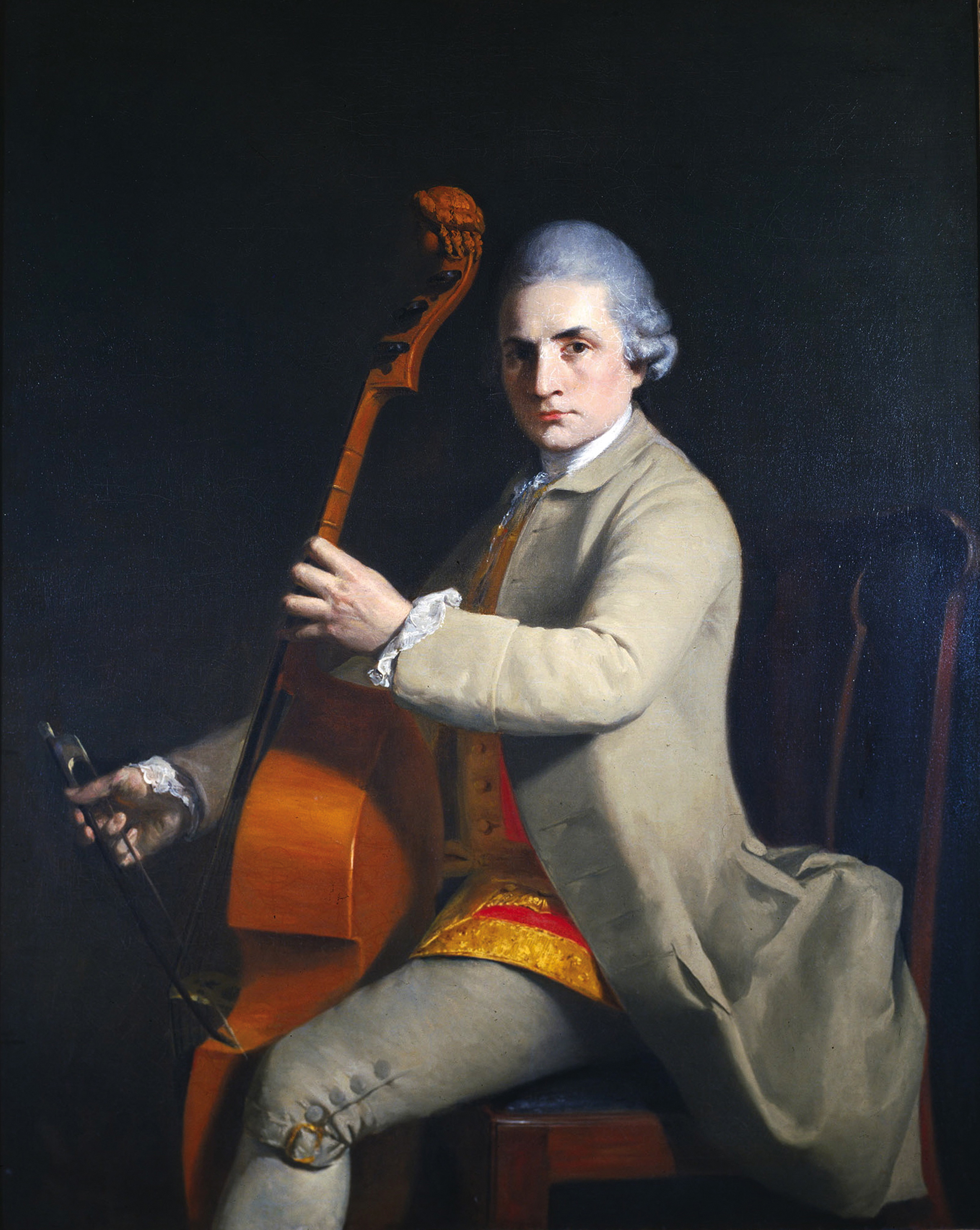
Portrait of Carl Friedrich Abel
Portrait of Carl Friedrich Abel by an anonymous artist, oil on canvas, 39" by 49".
The painting shown here is a portrait of Carl Friedrich Abel, a famous viol player generally regarded as being the last of the great performers before the viol fell into disuse. He was born in 1723 into a musical family and was educated at the St. Thomas School in Leipzig under J.S. Bach. He grew up with some of Bach’s sons and when he went to England in 1759 to further his career, Johann Christian Bach joined him three years later. There they were part of an artistic circle that included the well-known oboist Johann Fischer and the painter Thomas Gainsborough. Bach and Abel started a series of public orchestral concerts in London, the first of their kind, in which the symphonies of both composers were heard. Gainsborough contributed to the enterprise by painting on the back of glass to create unique lighting fixtures for the performance venue.
Gainsborough played the gamba himself and painted Abel several times at different ages. In the most famous of these portraits, at the Huntington Library in California, Abel is seated at a writing table, quill pen in hand, with the neck of his viol leaning against his left leg. Two others, both at the National Portrait Gallery in London (one an oil painting and the other a preliminary chalk drawing of the same pose), have him holding the instrument in playing position, though with his right hand resting on his thigh rather than actually bowing the strings. Both show the distinctive bow hold that is so clearly depicted in our painting, with the first two fingers placed on the stick of the bow, whereas the much more common bow hold has only the first finger on the wood. Our painting, which seems to show a younger Abel than any of the others, was thought at one point to be by Gainsborough, but had been removed from his oeuvre before we bought it.
The story of our acquiring this painting is one that is typical of the good things that happen to well-known collectors. In 1979 one of Jim’s Curtis Institute friends, the flutist John Solum, was living in Westport, Connecticut. He knew a singer, Brenda Lewis Cooper, who was settling her husband’s estate. She had sung for years at the Metropolitan Opera, married, and collected art with her husband. She was sending the bulk of the collection to Sotheby’s, but she wanted this painting to go to someone special. She asked John if he knew of any gamba players who collected art, and of course he thought of us. After seeing photos of it we went to Westport to negotiate. Fortunately, she was willing to let us pay for it over a period of time. (We came to appreciate “installment” buying and used it to sell things successfully as well. There has to be trust, but it makes big purchases manageable and instills some financial order into the life of collectors.)
Mrs. Cooper said that she and her husband had bought it many years earlier, in the 1930s, as a Gainsborough. The English art historian Sir Ellis Waterhouse, who included it in his catalogue of Gainsborough’s works published in 1958, later looked at the painting again and determined it was a wrong attribution. Jim and I have always felt that the circumstances of the friendship between Abel and the painter point to this being perhaps an informal portrait done long before Gainsborough had developed his signature style with beautifully painted backgrounds. Of course we have no academic background in art history to substantiate such a claim, but we have looked at English portraits in museums all over the world and have been unable to come up with a more suitable attribution. I would love to have an English portrait expert give it serious study. Jim thought he knew the gamba Abel is playing, but that is one of the many bits of information that were lost with Jim’s passing.
Since this book has been largely a memoir, I will relate a very special moment in our life together that we always remembered fondly. After packing the painting into our Volkswagen squareback (it had one-half inch clearance!), we were on our way from Westport to see a Bertrand gamba that we had just heard about being available in Hoboken, New Jersey. (The story of how we were unable to buy this one and it ended up belonging to Wieland Kuijken will have to wait for another occasion.) It was a beautiful winter day and we were crossing the George Washington Bridge with its stunning view of Manhattan when we turned on the radio to hear Stravinsky’s Rite of Spring. We speculated on what Mr. Abel might have thought about the panorama before us and the music we were hearing. It was a marvelous connection for us between the past and the present and was such a wonderful symbol of our life together in pursuit of beauty of all sorts.
